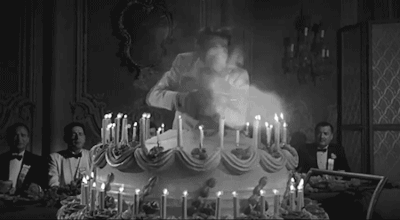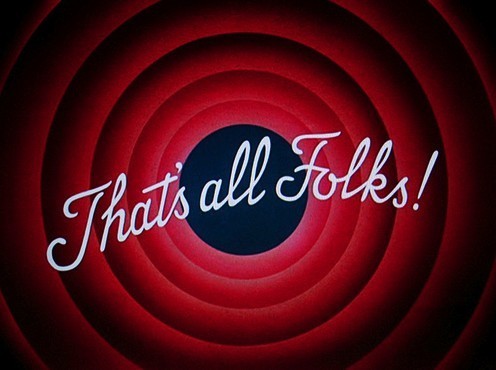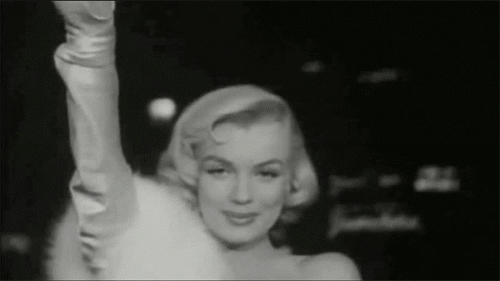A collection by Neal McKenna
To add your comments, click here
A collection by Neal McKenna
Parasites trick their rat hosts into being eaten by cats
BY ALASDAIR WILKINS The single-celled parasite Toxoplasma gondiilives infects rats, but it needs to be inside a cat's digestive system in order to reproduce. The parasite actually alters the brain of its rat host so that it won't be afraid of cats.
Specifically, Stanford researchers discovered that Toxoplasma affects the rat's brain so that the fear centers of the brain no longer respond to cat odors. Even more crazily, it appears that Toxoplasma makes the rat brain think it's sexually attracted to the cat odor. Those factors are likely more than enough to get rats hanging around dangerously close to cats, and thus gives the parasite a chance to complete its reproductive cycle.
The parasites appear to be very precise in their alterations - the rats still function normally in all areas not directly related to the fear of cats. Researcher Patrick House explains:
"These findings support the idea that in the rat, Toxoplasma is shifting the emotional salience of the detection of the cat. They also suggest that fear and attraction might lie on the same spectrum, or at least that the emotional processing of fear and attraction are not entirely unrelated."
We don't know how the parasite has this remarkable effect. Previous research indicates thatToxoplasma tends to enter the rat's brain and take up residence near the amygdala, a part of the brain heavily involved in fear and other emotional responses. Somehow, Toxoplasma is causing certain subsections of the amygdala to decrease the fear response to cat odor.
And it might not be only rats who are affected by this. A third of all humans carry Toxoplasma, and we don't really have a clear grasp on what - if anything - these parasites might do to the human brain. There's some evidence that Toxoplasma is linked to incidents of schizophrenia in humans, but what we don't know still far outweighs what we do.
You Dirty Rat...
Blonde Crazy (1931 not 1932)

Gif Via Tackorama
James Cagney
| James Cagney | |
|---|---|
 from his Oscar winning performance in Yankee Doodle Dandy (1942) | |
| Born | James Francis Cagney, Jr. July 17, 1899 New York City, New York, U.S. |
| Died | March 30, 1986 (aged 86) Stanford, New York, U.S. |
| Occupation | Actor/Dancer |
| Years active | 1919–84 |
| Spouse | Frances Vernon (1922-86) (his death) |
James Francis Cagney, Jr. (July 17, 1899 – March 30, 1986) was an American actor, first on stage, then in film] where he had his greatest impact. Although he won acclaim and major awards for a wide variety of performances, he is best remembered for playing "tough guys." In 1999, the American Film Institute ranked him eighth among its 50 Greatest American Screen Legends.
In his first professional acting performance, he danced dressed as a woman in the chorus line of the 1919 revue Every Sailor. He spent several years in vaudeville as a hoofer and comedian, until he got his first major acting part in 1925. He secured several other roles, receiving good notices, before landing the lead in the 1929 play Penny Arcade. After rave reviews, Warner Bros.signed him for an initial $500-a-week, three-week contract to reprise his role; this was quickly extended to a seven-year contract.
Cagney's seventh film, The Public Enemy, became one of the most influential gangster movies of the period. Notable for its famous grapefruit scene, the film thrust Cagney into the spotlight, making him one of Warners' and Hollywood's biggest stars. In 1938, he received his first Academy Award for Best Actor nomination, for Angels with Dirty Faces, before winning in 1942 for his portrayal of George M. Cohan in Yankee Doodle Dandy. He was nominated a third time in 1955 for Love Me or Leave Me, costarring with Doris Day. Cagney retired for twenty years in 1961, spending time on his farm, before returning for a part in Ragtime, mainly to aid his recovery from a stroke.
Cagney walked out on Warner's several times over the course of his career, each time coming back on better personal and artistic terms. In 1935, he sued Warners for breach of contract and won; this marked one of the first times an actor had beaten a studio over a contract issue. He worked for an independent film company for a year while the suit was being settled, and also established his own production company, Cagney Productions, in 1942, before returning to Warner's again four years later. Jack Warner called him "The Professional Againster," in reference to Cagney’s refusal to be pushed around. Cagney also made numerous morale-boosting troop tours before and during World War II, and was president of the Screen Actors Guild for two years.
Greatest Movie Mis-Quotes
Here are some prime examples:
- In The Virginian (1929), one of the earliest Western talkies, Gary Cooper's taunting line was not: "Smile when you call me that!", or "When ya call me that, smile!", but "If you wanna call me that, smile."
[Owen Wister's book used the phrase: "When ya call me that, smile!"]
Play 1929 clip: (88 KB)
(88 KB)
- In the Marx Brothers comedy film Animal Crackers (1930), Groucho Marx (as African jungle explorer Captain Geoffrey T. Spaulding) delivered the following line: "One morning, I shot an elephant in my pajamas. How he got in my pajamas, I don't know." It has often been misquoted as: "...How he got in my pajamas I'll never know."
Play 1930 clip: (35 KB)
(35 KB)
- The legendary blood-sucking Count Dracula (Hungarian-born actor Bela Lugosi) never said "I want to suck your blood" in the Universal horror classic, Dracula (1931). However, the line was used in a humorous context by Dr. Tom Mason (Ned Bellamy) practicing his Bela Lugosi (Martin Landau) impersonation in director Tim Burton's Ed Wood (1994).
- Often misquoted is Dr. Henry Frankenstein (Colin Clive) - yes, Frankenstein was the name of the mad scientist - and his shout of "It's alive!"with the stirring of life within his non-human Monster (Boris Karloff), in Frankenstein (1931). Frankenstein has often been quoted as saying instead: "He's alive! Alive!" Mel Brooks' irreverent spoof Young Frankenstein (1974) featured grandson Frederick Frankenstein (Gene Wilder) resuming his late grandfather's experiments, and his loud exclamation of: "Alive. It's alive! IT'S ALIVE!" to bug-eyed Igor (Marty Feldman) and voluptuous lab assistant Inga (Teri Garr):
Play 1931 clip: (18 KB)
(18 KB)
Play 1974 clip: (54 KB)
(54 KB)
- The mobster refrain, "You dirty rat!" - was never said verbatim by James Cagney, although he did say something similar, "Mmm, that dirty, double-crossin' rat," in Blonde Crazy (1931). It was misquoted in Cole Porter's 1934 stage classic Anything Goes and in Teenage Mutant Ninja Turtles (1990) when Michelangelo imitated James Cagney: "You dirty rat. You killed my brudda. You dirty rat."
[In Home Alone (1990), Macauley Culkin watched a scene from a fictional B/W gangster film videotape titled, "Angels With Filthy Souls" (a take-off on the Cagney film Angels With Dirty Faces (1938)), in which a gangster shoots his girlfriend, while saying, "Take that, you dirty rat!"]
- Greta Garbo's most famous quote of all, "I want to be alone" was often thought to be non-existent or merely a statement of her reclusive nature in private life. However, it prominently appeared, with her famous accent spoken by the character Grusinskaya in Grand Hotel (1932):
Play 1932 clip: (38 KB)
(38 KB)
- "Me Tarzan, you Jane" - was a catchphrase inaccurately-quoted from Tarzan, the Ape Man (1932)
Jane: (pointing to herself) Jane.
Tarzan: (he points at her) Jane.
Jane: And you? (she points at him) You?
Tarzan: (stabbing himself proudly in the chest) Tarzan, Tarzan.
Jane: (emphasizing his correct response) Tarzan.
Tarzan: (poking back and forth each time) Jane. Tarzan. Jane. Tarzan... - "You're going out (there) a youngster, but you're coming back a star!", "You're going out (on that stage) a nobody, (kid), but you're coming back a star!", or "You're going out a chorus girl, but you're coming back a star!" - all misquotes of the original line in 42nd Street (1933): "But you keep your feet on the ground and your head on those shoulders of yours and go out, and, Sawyer, you're going out a youngster, but you've got to come back a star!"
Play 1933 clip: (91 KB)
(91 KB) - "Is that a gun [or pistol] in your pocket, or are you just glad to see me?" - was not spoken by Mae West in She Done Him Wrong (1933) - but she did restate the line in her final film Sextette (1978) to co-star George Hamilton. Reportedly, she spoke the line to an escorting LA police officer who met her at the LA railway station in February, 1936.
[Note: The line was parodied in Mel Brooks' Blazing Saddles (1974) by Madeline Kahn as Lili Von Schtupp as: "Is that a ten gallon hat, or are you just enjoying the show?"
Play 1974 clip: (32 KB)
(32 KB)
And in Who Framed Roger Rabbit (1988), Dolores (Joanna Cassidy) asked Eddie Valiant (Bob Hoskins) - with Roger Rabbit concealed in his pocket: "Is that a rabbit in your pocket or are you just happy to see me?"] - In the 1933 film She Done Him Wrong (1933), the bawdy actress Mae West did say, "Why don't you come up sometime 'n see me?", oftenmisquoted as "Why, don't you come up and see me sometime?" or "Come up and see me sometime." She also said: "Come up again, anytime."
Play 1933 clip: (22 KB) (short version)
(22 KB) (short version)
Play 1933 clip: (142 KB) (long version)
(142 KB) (long version)
Play 1933 clip: (36 KB) (variation)
(36 KB) (variation) - In the Laurel and Hardy classic comedy, Sons of the Desert (1933), Oliver Hardy exclaimed to partner Stan Laurel: "Well, here's another nice mess you've gotten me into!" He did NOT say: "Well, here's another fine mess you've gotten us into" or "Here's another fine mess you've gotten me into."
Play 1933 clip: (9 KB)
(9 KB) - At the conclusion of the classic adventure film King Kong (1933), Robert Armstrong (as Carl Denham) uttered the famous closing line: "Oh, no, it wasn't the airplanes. It was Beauty killed the Beast." Some have heard it to say: "...'Twas Beauty killed the Beast," although there's little doubt.
Play 1933 clip: (63 KB)
(63 KB)
- In The Lives of a Bengal Lancer (1935), Douglass Dumbrille (as treacherous Mohammed Khan) did NOT say: "We have ways of making you talk" or "We have ways to make you talk." Instead, he said: "Well, gentlemen. We have ways to make men talk."
Play 1935 clip: (41 KB)
(41 KB)
 "Mirror, mirror on the wall, who is the fairest of them all?" - is actually an incorrect quote. In Disney's animated film Snow White and the Seven Dwarfs (1937), the wicked Queen asked: "Magic Mirror on the Wall, who is the Fairest one of all?" [The misquote was heard in Elvira, Mistress of the Dark (1988), 101 Dalmatians (1996), 54 (1998), and other films.]
"Mirror, mirror on the wall, who is the fairest of them all?" - is actually an incorrect quote. In Disney's animated film Snow White and the Seven Dwarfs (1937), the wicked Queen asked: "Magic Mirror on the Wall, who is the Fairest one of all?" [The misquote was heard in Elvira, Mistress of the Dark (1988), 101 Dalmatians (1996), 54 (1998), and other films.]
Play 1937 clip: (66 KB)
(66 KB)
- "Come with me to the Casbah," followed by "we'll make beautiful music together" was not said by Charles Boyer to co-star Hedy Lamarr inAlgiers (1938). It was said by cartoon characters Yosemite Sam and Pepe LePew in subsequent Looney Tunes cartoons, among others. In fact, animator Chuck Jones based the Warner Brothers cartoon character Pepe LePew on Charles Boyer's Pepe Le Moko.
- "Elementary, my dear Watson!" - was a phrase never spoken by the lead character in the many Sherlock Holmes novels from Sir Arthur Conan Doyle. This quote was rather found in a film review in the New York Times on October 19, 1929. It became popularized only after its trademark use in The Return of Sherlock Holmes (1929) (the first Holmes film with sound), with Clive Brook (as Holmes) and H. Reeves-Smith (as Dr. Watson). [Watson: "Amazing, Holmes." Holmes: "Elementary, my dear Watson. Elementary."] It was also stated by Basil Rathbone's Sherlock Holmes character in Twentieth Century Fox's The Adventures of Sherlock Holmes (1939) - "Elementary, my dear Watson. Purely elementary." The closest phrases in Doyle's writings were in The Crooked Man ("Excellent!" I cried. "Elementary!", said he.), and in The Adventure of the Cardboard Box ("It was very superficial, my dear Watson, I assure you"). Via AMC Filmsite
- You'll get a bang out of this...
To add your comments click on
links to this post here or below.
It will take you to a stand-alone
copy of this page.
There, you'll find the comments box,
so feel free to let 'er rip.


✔✔✔✔✔✔ ✔✔✔✔✔✔





No comments:
Post a Comment